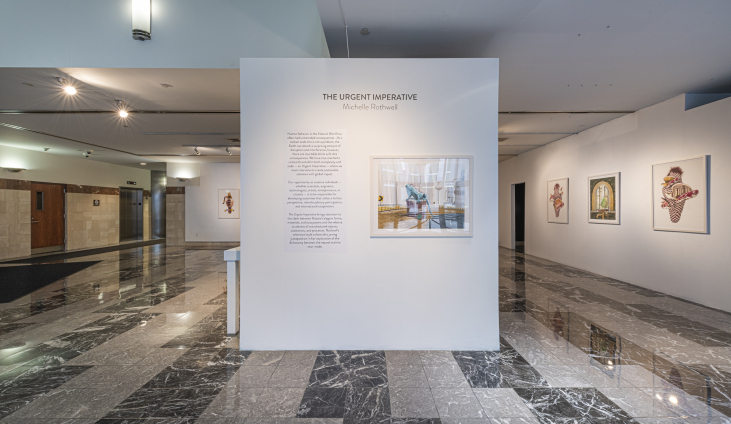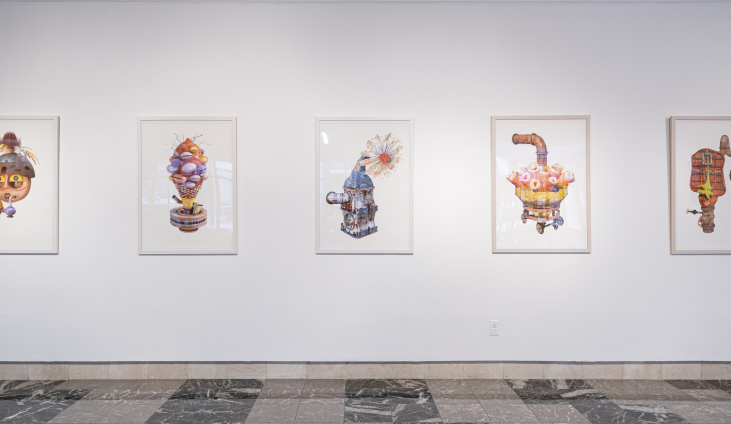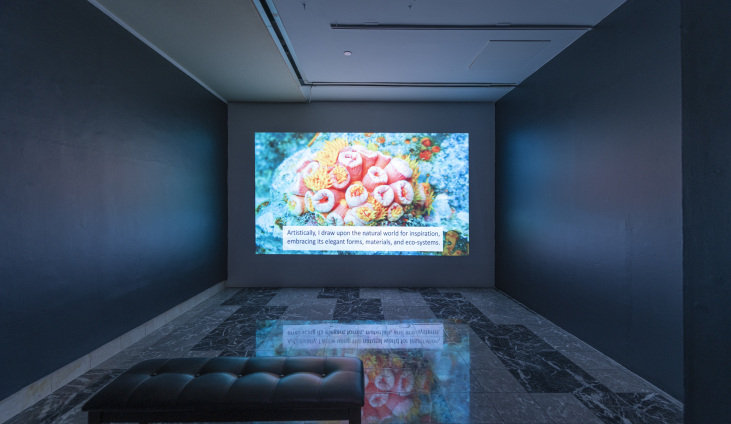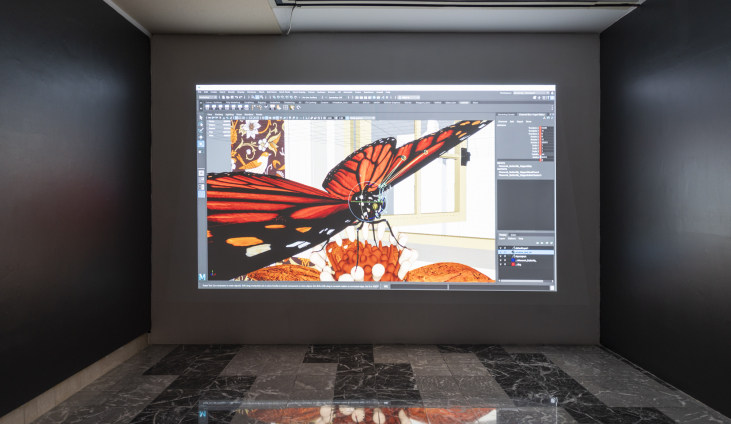Often isolated against a white backdrop, the majority of Rothwell’s creations are presented as framed portraits, vertically oriented and uniform in size. The visually textured chimera she constructs –half floral/half industrial– have a steampunk aesthetic. At times, they are reminiscent of Myst, an early adventure-style video game where players seek out puzzles in an uninhabited landscape. Sharing a sense of uncertain future, Michelle Rothwell’s virtual worlds also contain complexly coded visual clues based on nature.
Her 2014 diptych ‘Spirit Egg’ draws inspiration from the distinctive seedpods of the Banksia tree, using their conical structure to explore duality. The artist explains, “I use their exterior form to represent the way Nature cradles us within; I use the cracks in the pods, which are formed when seeds are released, as apertures to reveal interior scenes.”[2] Banksia seedpods are a fitting subject, not only because they exhibit the mathematical beauty of natural design, their diamond-shaped bracts elegantly spiraling in a choreographed Fibonacci sequence; they also serve as a timely metaphor for ‘The Urgent Imperative.’
I use their exterior form to represent the way Nature cradles us within; I use the cracks in the pods, which are formed when seeds are released, as apertures to reveal interior scenes.
Banksia trees are native almost exclusively to Australia (only one of the more than 170 species of the genus is naturally found elsewhere.) During the months of Michelle Rothwell’s exhibition at Esther Klein Gallery, we’ve watched wildfires devastate this habitat. Banskia is a testament nature’s resilience but also its limits. This genus of trees has evolved to adapt to the wildfires of Australia; the extreme heat of bushfires opens its seed pods, releasing new life into the post-blaze environment. But man-made consequences of climate change and urban growth are disrupting this balance. The ferocity and frequentness of recent fires have killed countless numbers of these trees — which won’t return for decades. Some species – like the Dark Bract Banksia – are already on the Critically Endangered list and may not survive this round of disaster.
In Michelle Rothwell’s prescient ‘Spirit Egg,' the woody seedpod adapts again, this time with the intervention of technology. Using 3d modeling, the artist transforms the natural form into a brightly hued vessel, highlighting the innate complexity of its architecture, rendering it as precious as a Fabergé egg. The seedpod’s apertures, opened by flame, are now gilt like Kintsugi cracks, revealing another opulent world within. In this image – and throughout her allegorical exhibition – Rothwell illustrates the inherent value of the natural world, making clear the cost of human impact, while tempering bleak realities with creative hope.
[1] A process-oriented video details the making of Bio Disaster No 4, revealing it to be a digitally constructed diorama. The walk-through showcases Rothwell’s holistic approach to creativity; her newly published textbook also speaks to her synthesized roles as artist/teacher/author.
[2] from artist’s statement: https://www.cruxspace.com/exhibitions/michelle-rothwell-biomimicry/
Photo credit Jaime Alvarez







